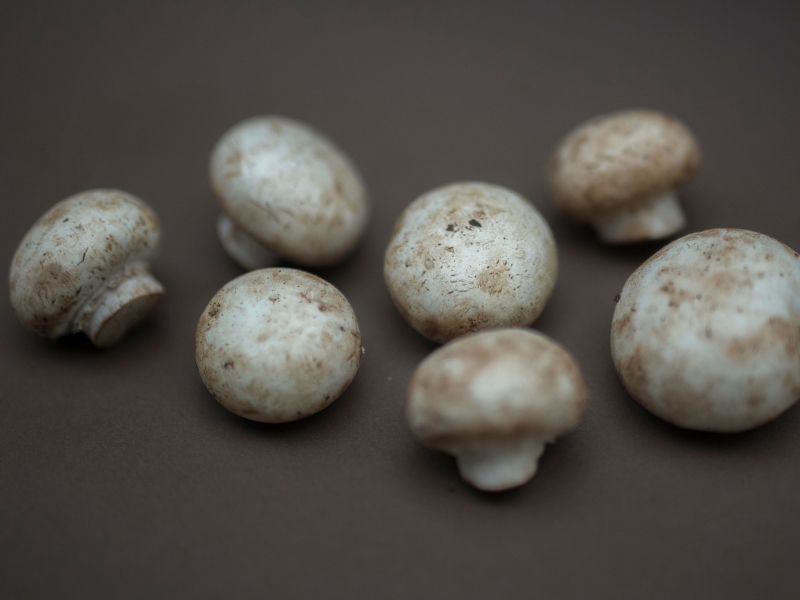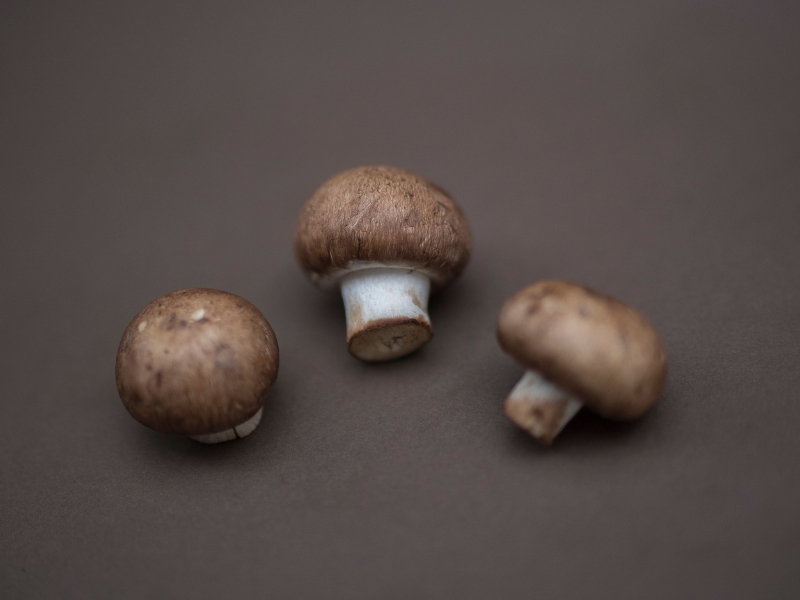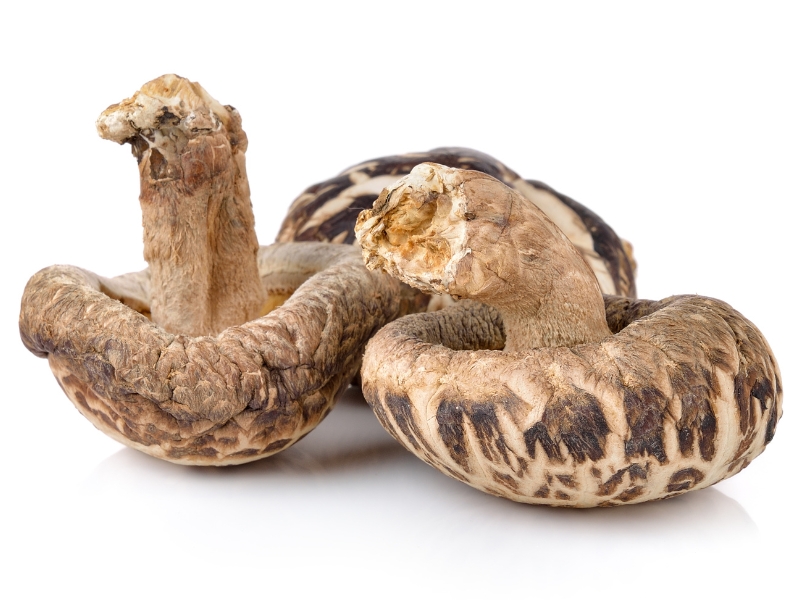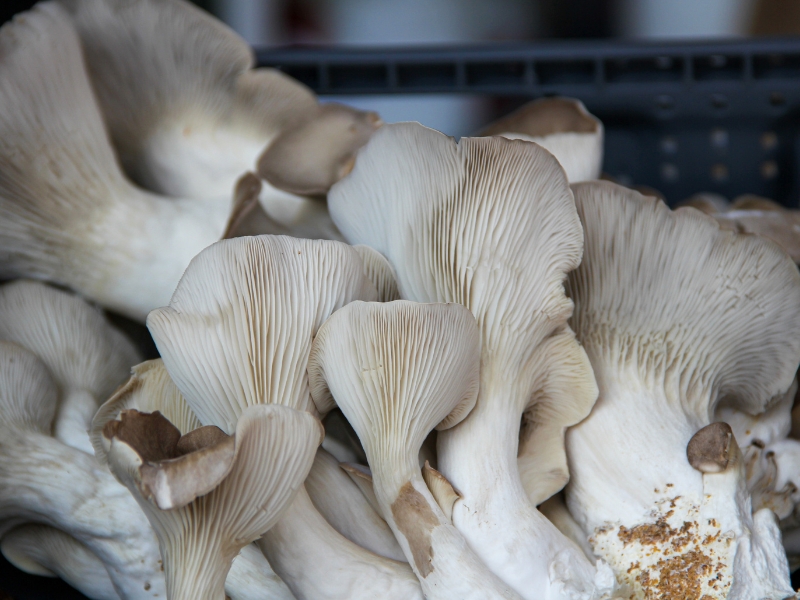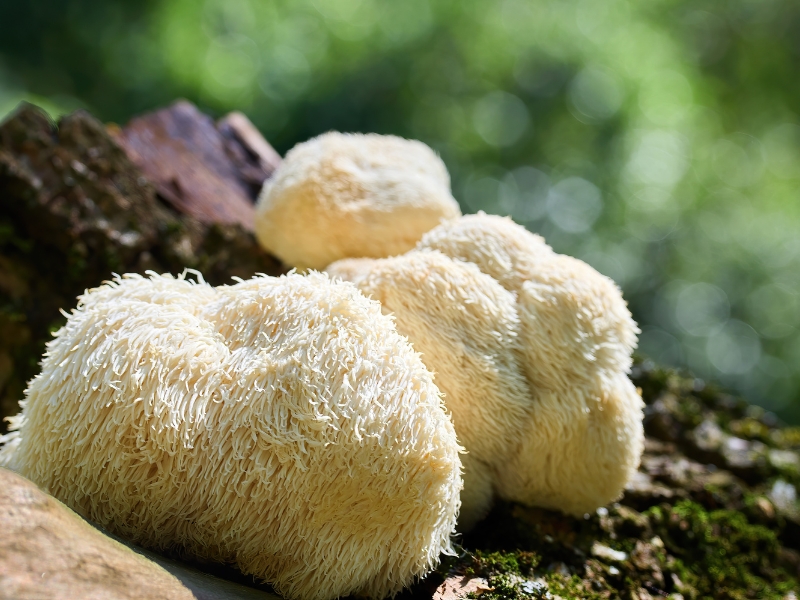Mushrooms. Earthy, mysterious, and utterly delicious. Whether you’re tossing them into a sizzling pan of butter and garlic, layering them onto a homemade pizza, or crafting the perfect umami-rich broth, edible mushrooms bring a world of flavor to your kitchen.
But with so many mushroom varieties to choose from, which ones should you pick? How do you cook them to maximize their potential? Let’s dive deep into the wonderful world of edible mushroom types and unlock their culinary magic!
Why Eat Mushrooms?
They are more than just a delicious addition to your meals—they’re a nutritional powerhouse packed with health benefits!
Whether you love tossing them into a stir-fry, grilling them, or adding them to soups, they are one of the most versatile foods you can eat.
But what makes them so special? And what are the different types of edible mushrooms you should try? Let’s dive in!
Benefits of Eating Mushrooms
High in Protein
Mushrooms contain moderate protein, making them an excellent option for vegetarians and vegans.
Rich in Vitamins and Minerals
Many mushrooms are high in B vitamins, potassium, selenium, and copper.
Powerful Antioxidants
Some mushroom benefits include antioxidants that help protect cells from damage and reduce inflammation.
Immune-Boosting Properties
Certain mushroom varieties contain compounds that strengthen the immune system and may help fight infections.
Given these benefits, it is unsurprising that many nutrition experts consider mushrooms a superfood, frequently used in vegan supplements for their immune-boosting, anti-inflammatory, and antioxidant properties. However, to enjoy these benefits safely, knowing which mushrooms are edible and how to identify them correctly is essential.
Edible Mushroom Types You Should Try
Not all mushrooms are created equal when it comes to flavor and texture. Some are buttery and delicate, while others are meaty and robust. Here’s a breakdown of some types of mushrooms for cooking and how to make them shine.
1. White Button Mushroom (Agaricus Bisporus)
The humble button mushroom is the most common and widely available. Mild in flavor and incredibly versatile, they soak up sauces like a sponge and add a lovely texture to stir-fries, soups, and pasta dishes.
Want a pro tip? Sauté them in a mix of butter and olive oil to deepen their umami flavor!
How to Eat
- Best eaten raw in salads or lightly sautéed in butter.
- Works well in soups, omelets, and pasta dishes.
- Can be used as a topping for pizzas.
What Else Can Be Done
- White button mushrooms can be pickled for a longer shelf life.
- They can be dried and ground into a powder for seasoning.
2. Cremini Mushroom (Agaricus Bisporus – Brown Variety)
Think of creminis as button mushrooms with a bit more oomph! Also known as baby bellas, these beauties have a richer taste and a firmer texture. They’re perfect for roasting, adding depth to risottos, and enhancing meat dishes.
How to Eat
- Excellent for roasting, grilling, or adding to stews.
- Works well in sauces and risottos.
- Holds up well in stir-fries.
What Else Can Be Done
- Cremini mushrooms can be marinated and grilled as a side dish.
- They can be used as a meat alternative in vegetarian dishes.
3. Portobello Mushroom (Agaricus Bisporus – Fully Matured)
Grill them, stuff them, or slice them into “steaks” – portobellos are a must-have for any home cook. Their bold, almost beefy flavor makes them a fantastic meat substitute in burgers and fajitas.
Try marinating them in balsamic vinegar and garlic before throwing them on the grill!
How to Eat
- Ideal for grilling and used as a meat substitute in burgers.
- Stuff them with cheese, breadcrumbs, or other fillings.
- Great when roasted with herbs and olive oil.
What Else Can Be Done
- Portobello mushrooms can be blended into sauces for a richer taste.
- They can be used to make mushroom-based meat substitutes.
4. Shiitake Mushroom (Lentinula Edodes)
With their deep, woodsy aroma and intense umami punch, shiitakes are a favorite in Asian cuisine. Toss them into ramen, stir-fries, or miso soup, and watch them work their magic.
Pro tip: remove their tough stems before cooking, but don’t toss them—use them to make a flavorful mushroom broth!
How to Eat
- Commonly used in stir-fries, soups, and broths.
- Often dried and rehydrated for broths and sauces.
- Enhances umami flavors in various dishes.
What Else Can Be Done
- Shiitake mushrooms can be used in medicinal extracts.
- They can be fermented for probiotic benefits.
5. Oyster Mushroom (Pleurotus Ostreatus)
Named for their oyster-like shape, these delicate mushrooms have a mild, sweet flavor and a velvety texture. They crisp up beautifully when pan-fried, making them a fantastic addition to pasta, tacos, or even tempura!
Want to elevate your next dish? Sauté them with shallots and thyme for a luxurious topping on toast.
How to Eat
- Tastes excellent when pan-fried or stir-fried.
- Can be roasted with garlic and herbs.
- Used in vegetarian dishes as a meat alternative.
What Else Can Be Done
- Oyster mushrooms can be made into vegan mushroom jerky.
- They can be blended into soups for a creamy texture.
6. Lion’s Mane Mushroom (Hericium Erinaceus)
Lion’s mane mushrooms have a unique shaggy appearance and a slightly seafood-like taste, often compared to crab or lobster. They are known for their potential cognitive benefits and are commonly used in medicinal applications.
How to Eat
- Best when sautéed in butter to bring out its crab-like texture.
- Used in medicinal teas and tinctures.
- Can be grilled or added to stews.
What Else Can Be Done
- Lion’s mane mushrooms can be dried and made into supplement capsules.
- They can be used in medicinal mushroom blends.
7. Chanterelle Mushroom (Cantharellus Cibarius)
Chanterelle mushrooms are easily recognizable due to their bright yellow-to-orange color and funnel shape. They have a slightly peppery flavor with a fruity aroma. These pair well with eggs, pasta, and creamy sauces. They are high in vitamin D and potassium.
How to Eat
- Ideal for creamy pasta sauces and risotto.
- Pairs well with eggs in omelets or scrambles.
- Often used in gourmet cooking for its distinct aroma.
What Else Can Be Done
- Chanterelle mushrooms can be pickled for extended storage.
- They can be blended into gourmet sauces.
Understanding the versatility of these mushrooms can help you make the most out of their flavors and nutritional benefits.
Exploring Mushroom Varieties: Beyond the Basics
While the above list covers the most common types for cooking, there are countless varieties to explore. From the delicate enoki to the bold lion’s mane, the world of fungi is vast and exciting.
If you love discovering new flavors, try these unique varieties:
- Enoki – Long, thin, and crunchy, excellent in hot pots and ramen.
- Black Trumpet – Smoky and rich, fantastic for earthy pasta dishes.
- King Oyster – Thick and meaty, ideal for vegan scallops or grilling.
The more you experiment, the more you’ll appreciate the diverse world of different kinds of edible mushrooms. Their unique textures and flavors can transform ordinary meals into gourmet experiences.
With the right preparation, they can enhance everything from soups to stir-fries. Exploring new varieties can open up a whole new world of culinary creativity.
Safe Mushroom Preparation Tips
Once you have obtained safe, edible mushrooms, it is essential to prepare them correctly to enhance their flavor and minimize potential risks.
Cook Mushrooms Thoroughly
Some mushrooms contain natural toxins that cooking helps neutralize.
Wash Gently
Wash mushrooms with a damp cloth to retain their flavor and texture instead of soaking.
Remove Tough Stems
Some mushrooms, like shiitake, have woody stems that should be removed before cooking.
Experiment with Cooking Methods
Mushrooms can be grilled, sautéed, roasted, or made into soups and broths.
Exploring Different Mushrooms for Cooking
Mushrooms are a versatile ingredient used in a variety of cuisines around the world. From earthy and meaty to delicate and nutty, different kinds add unique flavors and textures to dishes.
Here are some popular varieties to consider for your next meal:
Common Edible Mushrooms
- Cremini Mushrooms – A mild, versatile mushroom often used in soups, stir-fries, and pasta dishes.
- Portobello Mushrooms – Large and meaty, these are great for grilling or as a meat substitute in burgers.
- Shiitake Mushrooms – Known for their rich, smoky flavor, they enhance stir-fries, soups, and noodle dishes.
- Oyster Mushrooms – Delicate in texture with a slightly sweet taste, perfect for sautéing or adding to risottos.
- Chanterelle Mushrooms – A gourmet favorite with a peppery, apricot-like aroma, delicious in-cream sauces, and egg dishes.
Easy Mushroom Recipes
Garlic Butter Sautéed Mushrooms
Ingredients:
- 2 cups of different types of mushrooms (such as cremini, shiitake, and oyster), sliced
- 2 tbsp butter
- 3 cloves garlic, minced
- 1 tbsp fresh parsley, chopped
- Salt and pepper to taste
Instructions:
- Heat butter in a pan over medium heat.
- Add garlic and sauté until fragrant (about 1 minute).
- Add mushrooms, stirring occasionally, and cook for 5–7 minutes until tender.
- Season with salt and pepper, then sprinkle with fresh parsley. Serve warm.
Creamy Mushroom Soup
Ingredients:
- 3 cups mixed mushrooms, sliced
- 1 tbsp olive oil
- 1 onion, chopped
- 2 cloves garlic, minced
- 4 cups vegetable or chicken broth
- 1 cup heavy cream
- Salt and pepper to taste
Instructions:
- In a large pot, heat olive oil over medium heat. Sauté onion and garlic until soft.
- Add mushrooms and cook for 5 minutes until they release their juices.
- Pour in broth and bring to a simmer for 15 minutes.
- Stir in heavy cream, season with salt and pepper, and blend for a smooth consistency. Serve warm.
Cooking with different mushrooms brings depth and flavor to a variety of dishes. Whether sautéed, grilled, or blended into soups, different types of mushrooms can elevate everyday meals, especially if you’re whipping up something fun for Mushroom Monday.
Enjoy Safe and Nutritious Edible Mushrooms
Mushrooms are an exciting and nutritious addition to a balanced diet. However, identifying and consuming safe mushroom varieties is crucial to avoid health risks.
Proper knowledge and caution are essential when purchasing from a store or foraging in the wild. If there is any uncertainty about a mushroom’s safety, it is always best to err on the side of caution and avoid consuming it.
By familiarizing yourself with different edible mushrooms and following proper preparation methods, you can enjoy mushrooms’ unique flavors and health benefits.
Foraging for wild mushrooms can be a rewarding experience, but it should always be done with expert guidance to ensure safety.
FAQs
What is the most common edible mushroom?
The white button mushroom (Agaricus bisporus) is the most commonly consumed edible mushroom. It is widely available in grocery stores and used in various dishes.
What fungus is edible?
Many fungi are edible, including white buttons, cremini, portobello, shiitake, oyster, lion’s mane, and chanterelle mushrooms. These fungi are safe to eat and provide nutritional benefits.
Are mushrooms good to eat?
Yes, mushrooms are highly nutritious and versatile in cooking. They are low in calories, rich in vitamins and minerals, and provide antioxidants that support overall health.
Is mushrooms healthy or not?
Mushrooms are considered very healthy due to their high nutrient content, including B vitamins, selenium, potassium, and fiber. They also have immune-boosting and anti-inflammatory properties.
Are mushrooms a blood thinner?
Certain mushrooms, like shiitake, contain compounds that may have mild blood-thinning effects. However, they are not a substitute for medical anticoagulants, and individuals on blood thinners should consult a doctor before consuming them regularly.

